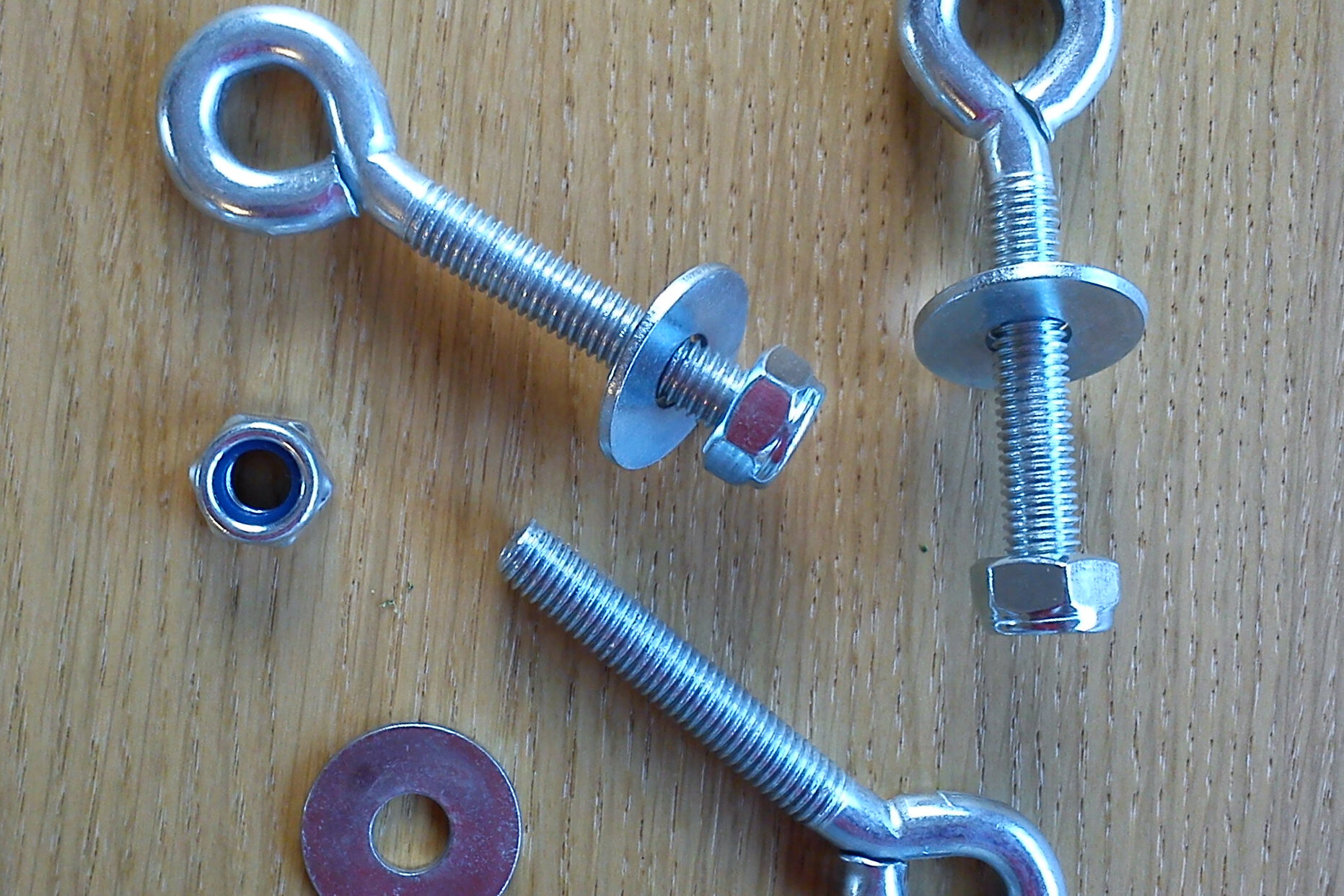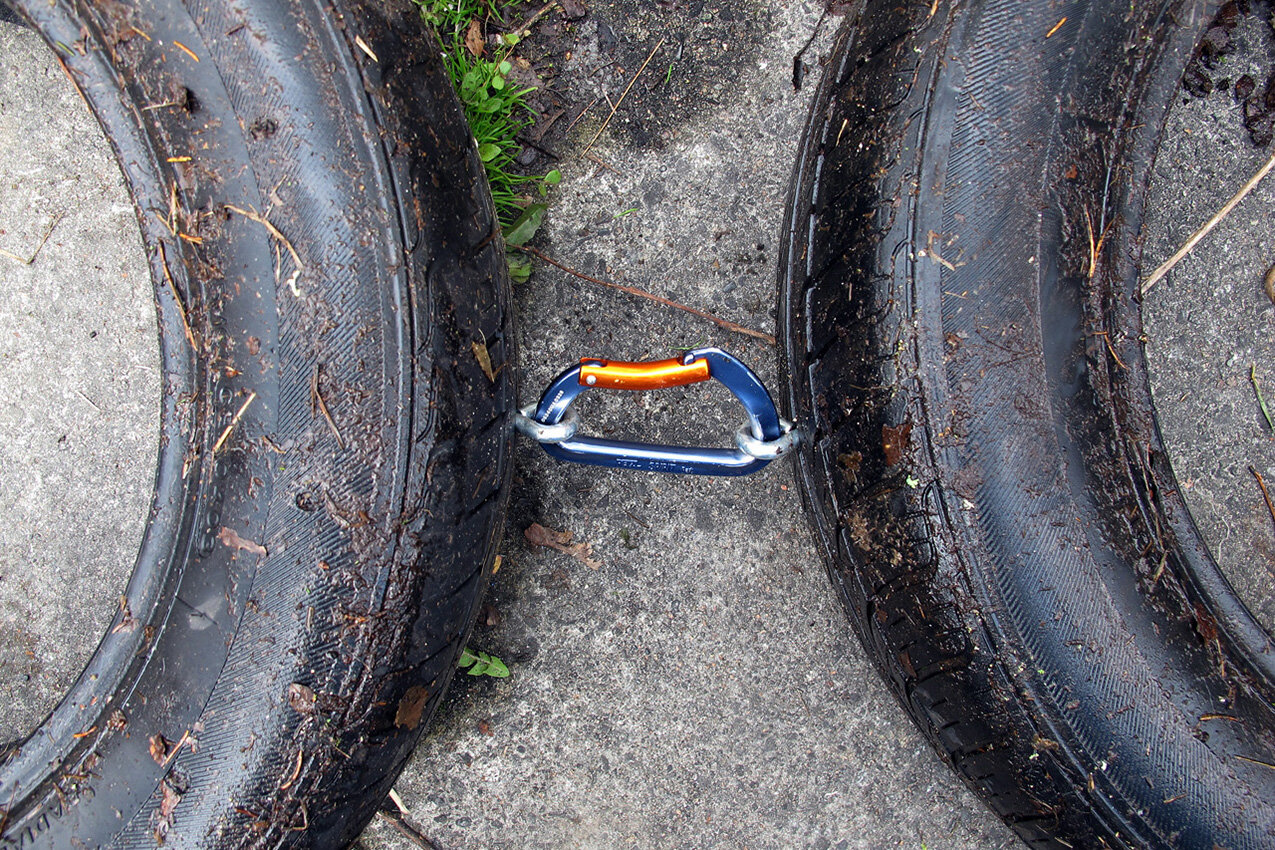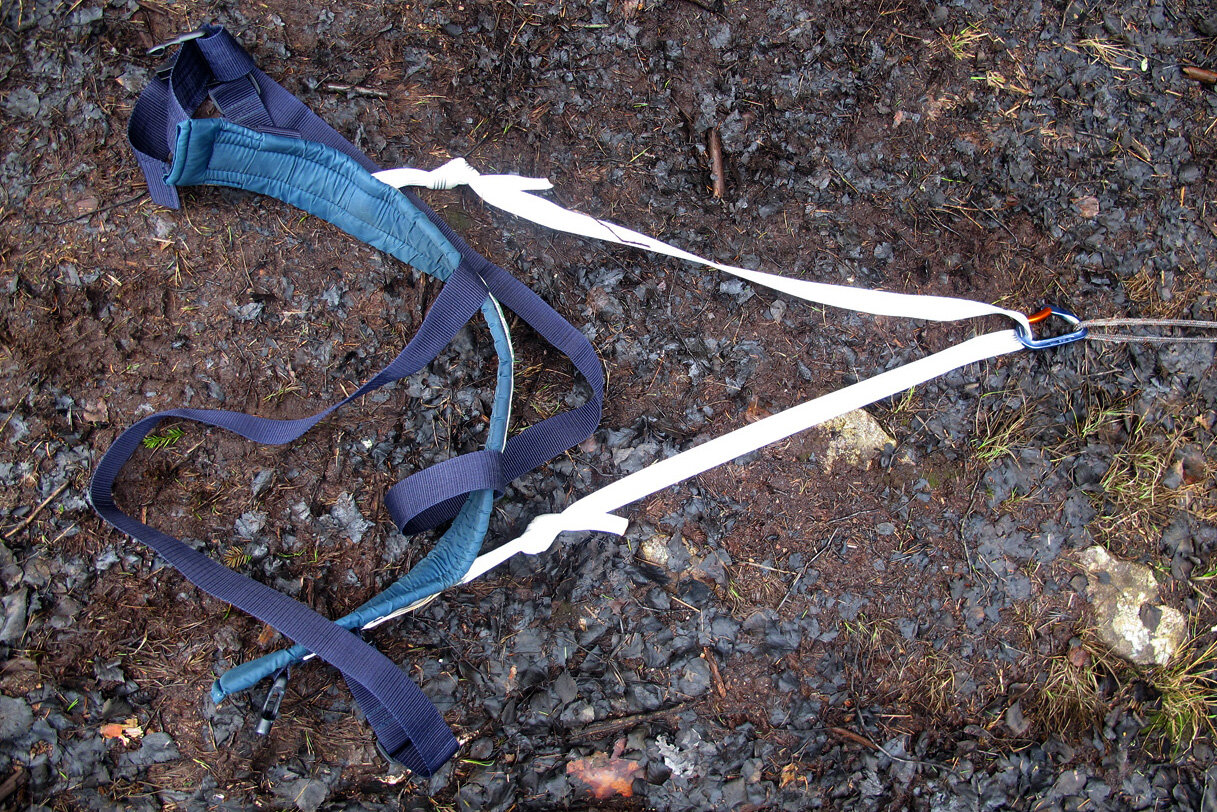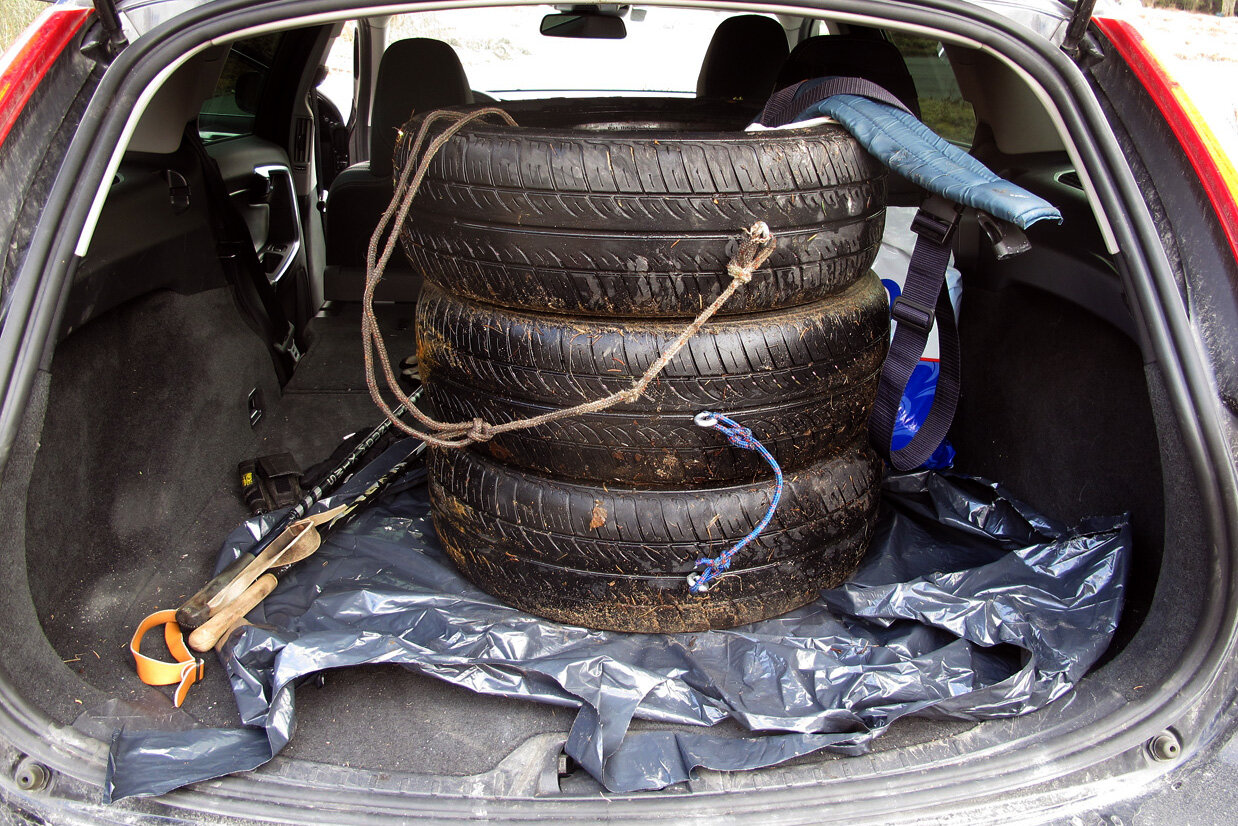The fine art of
pulling rubber tyres
by Børge ousland
history
The first known tyre-enthusiast in this country, and perhaps in the whole world, was Geir Randby. We planned our expedition to the North Pole in 1990, and Geir noticed that racehorses were trained by pulling huge truck tyres. Geir rigged up a couple of car tyres he found at the local petrol station and set off. The people in the small village he lived in thought he was a bit weird from before, and pulling tyres didn’t help on that impression… But as always, it is the result that counts, and pulling tyres builds the right kind of muscles needed for a trip to the North Pole.
That was over thirty years ago, nowadays people barely lift an eyebrow, and tyre-training has become the preferred form of exercise for explorers (and others) both summer and winter. Muscles of the back, buttocks, legs, and thighs should be built to withstand the hardship in the ice. The same goes for tendons and ligaments; the whole body must be reinforced. A trip to the poles (or Greenland) is no sprint, not even a marathon, it is the heavy loads over time that matters. This kind of training typically lasts for two to three hours at a time, sometimes more. It is heavy, but it’s rarely a matter of maximum heart rate.
nutrition
On long trips, your body must also be used to burn fat. That ability can be taught by starting with long training sessions as early as possible, at least one year in advance of a big trip. An experienced and well-trained marathon runner for example, will burn up to 90% of energy from fat, while at first, he was maybe down to 40%. The ability to burn fat is essential to avoid going “empty”. We have carbohydrates stored for just a few hours, but fat for several weeks. Eating right and healthy and enough food in the preparation phase will of course also have a positive effect on your body. Also bring something to eat immediately after the training session, the supply of energy then allows the body to recover faster.
from backpacks to tyres
In the old days we trained a lot with heavy backpacks as well. Walked in the woods, up and down hills, real hard training. But we had too much in our packs I think, 40-50 kg. Your body will wear down over time and chance of injuries increase. A good session with the backpack is still very good practice, but it’s better with less weight and rather go harder.
One of the major benefits of tyre training is that the burden is relatively kind to the body, and as long as you avoid the worst jerks, I would say that exercising with tyres is good for your back. It is mainly the muscles working; the load is on the ground behind you instead of on your back. Almost all the large muscles are at work, except perhaps the stomach that would benefit from a separate round.
‘polo polo’ does it
It doesn’t move fast, and it makes tyre pulling a special experience. In many ways it is a form of “zen”. When you run, the countryside hurtles past and you need to focus on where to put your feet, always pushing forward. Training with tyres is different. The ski poles help to keep balance, and you move forward in a steady long haul, but your eyes and mind can wander. You notice every ant on the path and catch up on the details in surrounding nature in a completely different way. I actually like it; it is a separate world, a form of slow time that provides both physical and mental strength.
Tyres can be pulled all over and they need not be the heaviest possible. It is the number of tyres and the surface of the ground that determines friction. Grass has the most friction, while gravel acts as a roller with less friction, pure tarmac is somewhere in between. You will get most diverse training in the woods, and that’s what I like best. In the woods my three tyres get stuck in roots and tufts and you must always use your head to choose the best route, not unlike going to the North Pole. I always choose difficult terrain, but within the area I am in I try to choose the easiest path. It’s like learning to drive with a trailer and in the pack-ice this is a very important lesson to have learned.
Most people who sell or change tyres, petrol stations and garages, have a bunch of old tyres lying outside. Free if you ask. The best tyres for the forest are old tyres with rounded shoulders, they slide well over bumps and rocks. The sharper the edge, on low profile tyres for example, the easier they get stuck. Some use the front wheel of a tractor; these are relatively heavy but has a good rounded shape. For use on tarmac anything can be used, one large truck tires or several small ones after another. I use three normal 45×55 radial winter tyres, not ideal for woodland, but they do their job.
As with all other training you must start at a level you are comfortable with, and then increase. The length of the training trips and the number of tires should be increased to progress. Most people start with one tire, and have something in a small backpack as well, for example 15 to 20 kilos. It takes time to get in shape, feel your way and increase to multiple tyres when you are ready.
When you create your own set, you need a drill and eye bolts (8 mm thickness is fine), stop-nuts and large washers. Tying rope directly in the rubber works, but experience has shown that it sooner or later breaks. One time I was sitting in the middle of the forest, trying to fix a torn rope, a guy came jogging by and asked if I had a flat tyre. Very funny :-) but a hassle when all I wanted was to be steaming on.
If several tyres are connected, you can of course attach a piece of chain with a couple of shackles or carbines between the eyebolts. If you use the car to get to where you train, I would, however, recommend rope. Chains are prone to scratching the bumper when tyres are lifted in and out of the trunk. The rope between the tyres should be just long enough for the tyres to be folded over each other. But if you train a lot in rugged terrain it may actually be easiest to connect directly with karabiners, it shortens the distance between the tires, and they flow a little easier over bumps.
pulling ropes
The sled has normally two ropes going to the harness. Pulling ropes, we call them, one on each side. Especially in rough ice you sometimes need to pull in only one rope to change the angle and turn the sled loose, but with tyres it’s enough with one rope, and only one fixation point in the tyre. Typical distance between you and the tyres/sled is 2.5 meters.
Attach a short rope or webbing that goes into a V about half a meter behind you. This clips into the rope from the tyre with a karabiner. The rope slides smoothly on the karabiner, and it’s easier to turn around to see what kind of troubles the guys back there have gotten themselves into. Tires are like four-years-old, and they rarely do what you want. Sometimes they get firmly stuck and need help, other times you can just jerk them loose with your hip.
Some attach the pulling rope directly to the backpack belt, but most use a standard pulling belt designed for sled pulling. If you go with a backpack in addition, the pulling belt should be slim and simple, so it can be worn under the backpack without causing discomfort.
A backpack in addition gives good resistance and there is room for bottled water and maybe something to eat quickly during breaks. A good way to weight down your backpack is by using water cans. The normal 4-litre windshield washing-liquid cans, which you find empty at most gas-stations, are ideal. Use old newspapers in between to stabilize and secure the cans. Get the weight as close to your back as possible. A big advantage with these is that the water can be poured out if you need to get rid of some weight along the way.
Ski poles are an important part of your kit for tyre pulling, and important for balance. But if you have forgotten your poles you can always break loose a couple of branches and yet save the day. I use rubber tips on the sharp end of the ski poles, it becomes quieter in the forest than when the normal metal tip hit stones all the time. Indeed, one is surprisingly quiet, just the muffled murmur sound from the tyres is heard.
A general rule is that you jog twice as fast as when you go with a backpack, and you walk twice as fast with a backpack than with tyres. You get bored doing the same routes all the time, therefore I have trails in several different areas. But when you need to find a new place, it pays to go for a run first to get to know the area. You are pretty stuck if you get lost in the woods with three tyres in tow, to say so.
‘weather’ or not?
Training is of course done in all kinds of weather. Especially when in the wood, the tyres get filled up with mud and water inside. You don’t want this inside your car, but it is almost impossible to get rid of the water. You must use the thickest drill you have and make a series of holes on the side of the tyres; this will let water out on the way. Big holes, small ones just get blocked with leaves and mud. Put a mat or a piece of plastic in the back of your car, tyres get incredibly muddy.
Remember that the weather never has anything to say. If it says training with tyres in your calendar, then that is what you have to do. Be a little reckless, go on no matter how much it rains or blows. It builds character, you will benefit from it the day on an expedition when weather is a bit rough with gale force wind and snow and you rather would be inside the tent feeling sorry for yourself. It is the sum of those days that gives victory in end.
After the training session is it good to prepare the tyres for the next round, flush away the dirt inside and out, stacking them neatly and remove the harness to let dry. The tyres are your helpers. You will get fond of these guys, so take care of them!
Other Training
The importance of physical fitness cannot be underestimated, and good physical shape is always a very an important part of the success on difficult expeditions. The main training is as always persistence, but to be in a good cardiovascular shape in addition will help to recover faster after a hard day. Some think they can get in shape on the way, but you go considerably faster and longer when your oxygen uptake is in your favour from the start. You get best oxygenation with varied training and varied pulse.
So, we fill in with both cardio and strength training. One must be trained right through, all parts of your body. All core muscles must be well trained, with great strength in the arms back, stomach and chest as well as legs. Also think about whether you should practice some special exercises that are related to the task. It may be to strengthen the arm movement needed to pull yourself up on the ice after a cold bath or getting up from a fall into a crevasse. Good basic fitness and strength has been essential for survival in many critical situations.
To add some short intense sessions in between is an advantage because the day simply has a limited number of hours. With walking, stretching and shower it takes in average around four hours to train with tyres or a backpack, and with all that stress before a long expedition, it is not always enough time left for everything to be done.
An effective running, cycling and strength session is the most common additional training. But we all have different preferences and there is not only one recipe. Choose a form of exercise that suits you, but you should have a goal and adapt training to your level and body. If you have problems with your back, add as the extra exercises something that strengthens abdominal and back. Train properly and stretch well after each session, over time this is necessary to prevent injuries.
a plan
With expedition partner Thomas Ulrich, I have set up a training program that certainly worked out well for us. We usually start the build-up a year in advance. Some days there will not be time to follow the program, - then we train extra hard the next day. The day before the rest day is scheduled as a long haul.
This is a good plan to start with, and that provides a good basic physical shape. The training will be increased by one to two days a week, five to six months before departure, primarily with endurance training. The last two three weeks before departure you can benefit from scaling down training somewhat, as focus and the energy needs to be somewhere else to get everything ready for the trip.









